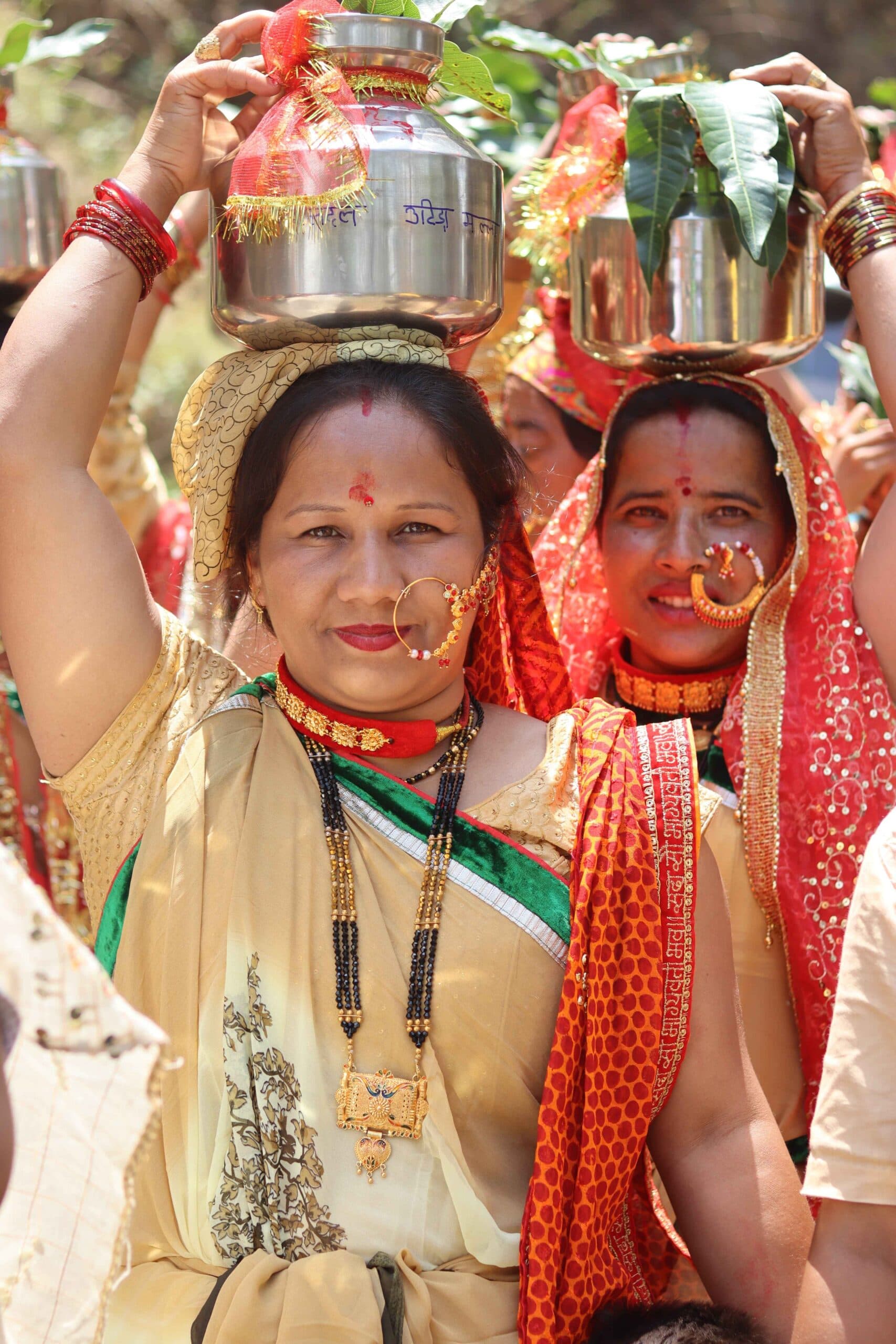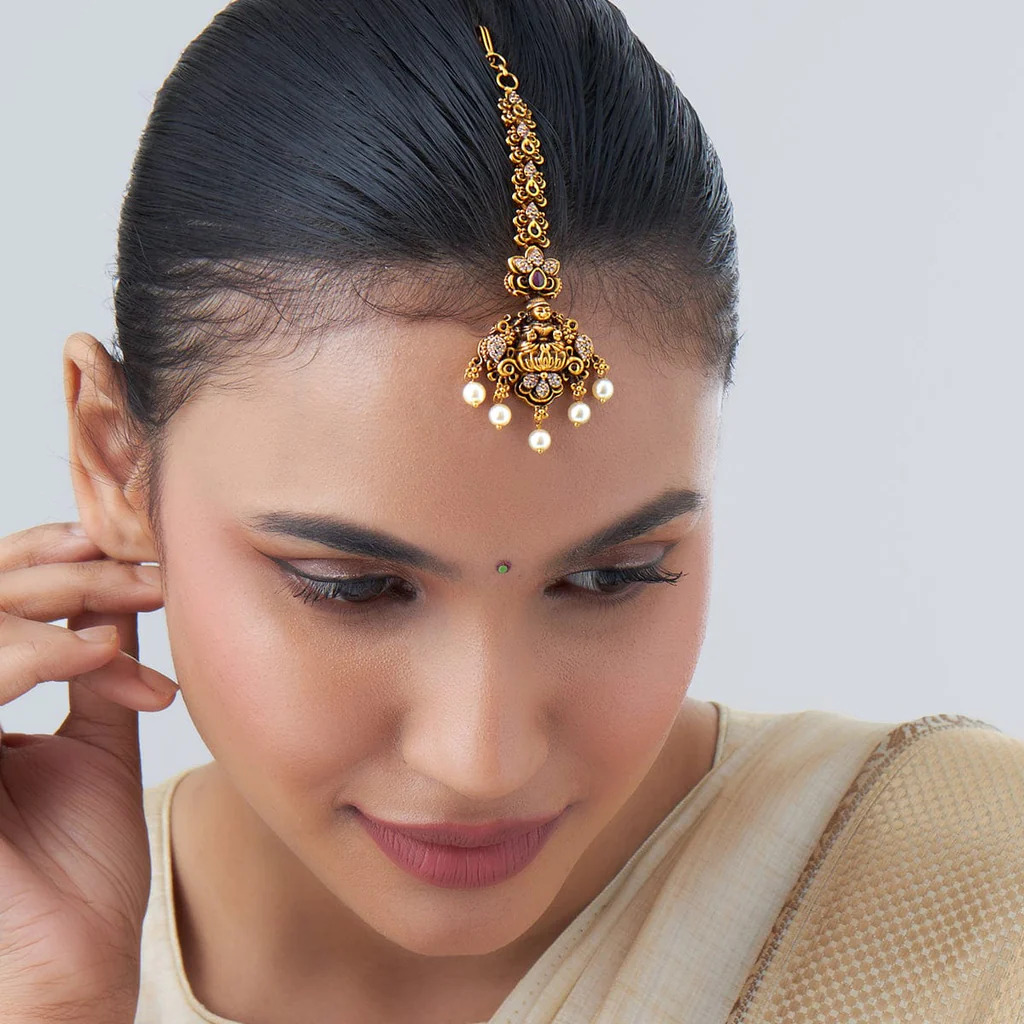Jewellery Design Guides and Brand Insights
Pahadi Jewellery: A Glimpse Into the Mountainous Charm
The Mintly Team
October 31, 2023
Nestled in the lap of the Himalayas, the Pahadi community carries a rich cultural heritage that is as diverse as it is beautiful. A prominent part of this heritage is the traditional Pahadi jewellery that has been passed down the generations.
Immerse yourself in the allure of Pahadi jewellery, a captivating blend of cultural heritage and artistic skill nestled in the heart of the Himalayas. This blog provides a fascinating look into the intricate designs and unique traditions that make this mountainous charm an enchanting world of its own.
A Brief History of Pahadi Jewellery
Pahadi Jewellery, originating from the Himalayan regions of India, holds a sacred and significant place in the heart of Indian culture. Its history stretches centuries back, reflecting the rich heritage and unique traditions of the Pahadi communities.
The roots of Pahadi Jewellery can be traced back to the ancient times when India was a land of small princely states. These regions, though isolated due to challenging terrains, developed their distinctive style of jewellery making. The artisans, primarily from Himachal Pradesh, Uttaranchal, and Jammu & Kashmir, drew inspiration from the mystical landscapes, flora and fauna around them.
The jewellery was traditionally made of pure gold and silver, adorned with precious and semi-precious stones like rubies, emeralds, turquoise, and coral. However, what sets Pahadi Jewellery apart is its intricate design patterns and motifs. The designs often depicted elements from nature, such as the sun, moon, flowers, birds, and even snakes.
Symbol of Societal Status
Pahadi Jewellery was not just an accessory but a symbol of societal status. It played an essential role in traditional ceremonies and rituals, especially weddings. The brides would often be adorned with various pieces like chokers, long chains, nose rings, anklet, and earrings, each carrying a unique significance.
The Chander Haar (moon necklace), for example, was an essential piece in a bride’s trousseau. Made with gold coins representing prosperity and good fortune, it was believed to bring blessings to the new couple.
Despite modernization and changing trends, Pahadi Jewellery has managed to retain its uniqueness and charm. Today, it is not just confined within the Pahadi communities but has gained recognition globally. Craftsmen are innovating and adapting to contemporary tastes while preserving the traditional designs. As a result, Pahadi Jewellery now caters to a wider audience, appealing to those who appreciate history, artistry, and the delicate balance between tradition and modernity.
Material and Craftsmanship
Pahadi Jewellery is an exquisite symbol of the rich cultural heritage of the Himalayan regions of India. This unique form of jewellery, also known as ‘Himachali jewellery’, encapsulates the essence of the Himalayas and reflects the traditions and lifestyle of the local communities.
At the heart of Pahadi Jewellery lies superior craftsmanship and the use of locally sourced materials. The artisans who create these beautiful pieces are highly skilled, with knowledge passed down through generations. They are adept at turning raw materials into intricate designs that tell a story.
The material used in Pahadi Jewellery is predominantly silver, but brass and copper are also used. The preference for these materials is due to their abundance in the region and their malleability, which allows artisans to carve intricate designs with ease.
The craftsmanship involved in creating these pieces is nothing short of extraordinary. Each piece is meticulously handcrafted, with immense attention to detail. The artisans use traditional tools and techniques, such as embossing and filigree work, to create elaborate patterns and motifs. These designs often depict elements of nature, such as flowers and leaves, or symbols from local folklore.
Pahadi Jewellery is not just a piece of adornment, it’s a testament to the rich cultural heritage of the Himalayan people. From simple nose rings to elaborate necklaces, every piece is a work of art that reflects the region’s history, traditions, and craftsmanship. Despite modern influences, this form of jewellery has retained its authenticity and continues to be a beloved part of the local culture.
Notable Pieces
There are several pieces of Pahadi jewellery that hold significant cultural importance:
- Chandmala: This is a moon-shaped pendant adorned with small bells and is often worn with traditional attire during festivals or weddings.
- Chiri: It is a long silver chain with tiny bird motifs that symbolize freedom and is typically worn around the neck.
- Timaniyaan: A necklace made from small coins, it represents wealth and prosperity.
- Pahunchi: These are heavy silver bracelets worn on both wrists.
- Nathni: The traditional nose ring adorned with stones or pearls.
Components of Pahadi Jewellery
The primary components of Pahadi Jewellery are silver and semi-precious stones, which are beautifully intertwined to create stunning pieces. One notable example is the ‘Chandrahaar’, a long chain necklace adorned with silver coins, beads, and often punctuated with vibrant stones.
It is an epitome of grace and elegance, making it a preferred choice for traditional occasions.
Another standout piece is the ‘Nath’, a large nose ring exquisitely designed with intricate patterns. The Nath is not only a piece of ornament but also a symbol of marital status in the Pahadi culture. It is typically embellished with pearls, rubies, or other coloured stones, enhancing its charm and grandeur.
The Pahadi ‘Kangan’, or bangle, is another masterpiece that deserves mention. Unlike typical bangles, it is made of silver and bedecked with semi-precious stones. The Kangan’s uniqueness lies in its elaborate carvings and chunky appearance, making it a statement piece in itself.
The ‘Jhumka’, an ear ornament, is another significant part of Pahadi Jewellery. These large, bell-shaped earrings are detailed with intricate designs and often paired with colourful beads or stones.

Lastly, the ‘Tikka’ – a forehead ornament – completes the array of Pahadi Jewellery. Tikkas typically feature a central pendant that dangles on the forehead and is attached to a string that runs along the hairline. They are usually ornate and embellished with semi-precious stones.
Significance in Today’s Time
Pahadi Jewellery, a unique artifact from the Himalayan region, has been the symbol of a rich cultural heritage that is deeply embedded in the social fabric of the communities living there. Its significance in today’s time is not only limited to its aesthetic appeal but extends to cultural preservation and economic stability.
In a world where fast fashion and mass-produced accessories dominate, Pahadi Jewellery stands as a beacon of sustainable fashion. Each piece tells a story, preserving traditional craftsmanship and cultural heritage. The intricate designs, inspired by nature and mythology, reflect the life and beliefs of the indigenous communities. This aspect of cultural preservation makes Pahadi Jewellery increasingly relevant in today’s globalized world.
Furthermore, Pahadi Jewellery plays a crucial role in promoting economic stability in the region. It provides a means of livelihood to the local artisans, sustaining their traditional crafts against the onslaught of industrialization. The rising interest in Pahadi Jewellery also boosts tourism, contributing to the local economy.
Pahadi Jewellery is not merely an accessory; it is a symbol of tradition, sustainability, and economic support. Its significance in today’s time is profound, making it a priceless possession for those who value culture and authenticity.
The Future of Pahadi Jewellery
Future of Pahadi jewellery lies in the blend of traditional artistry with contemporary design aesthetics. The timeless pieces that have adorned the women of the hills for centuries are now being reimagined with a modern twist. The intricate detailing and ornate designs remain. They are being fused with more minimalist and sleek designs to appeal to the younger generation.
The use of sustainable materials is another trend that is set to define the future of Pahadi jewellery. With increasing consciousness about environmental sustainability, Pahadi artisans are exploring eco-friendly materials like recycled metals, natural stones, and even organic materials like wood and seeds. This shift not only helps in preserving the environment but also adds a unique earthy touch to the jewellery.
Moreover, the advent of digital technologies is bringing Pahadi jewellery to the global stage. Artisans are now leveraging e-commerce platforms to sell their creations to customers across the world. This not only opens up new markets for them but also helps in preserving and promoting the rich cultural heritage of Pahadi jewellery.
Furthermore, bespoke Pahadi jewellery is gaining popularity. More and more customers are seeking customised pieces that reflect their personal style and values. This trend is encouraging artisans to experiment with different designs, materials, and techniques, leading to a wide variety of unique and innovative creations.
Jewellery Designs are unique to each culture and tradition. This Industry is being growing everyday with new ways to represent the changing culture. Kundan Jewellery, Polki, Jadau, Maharashtrian and many more cultural impacted designs worn by Indian women every day. Outside India, many cultures in Western World, Middle East, Africa and SE Asia embrace their own identity through Jewelry Designs.
Conclusion
Pahadi jewellery is not just an ornament. It’s a piece of history, a symbol of culture, and a testament to the artistic skills of the mountain people. It is a perfect blend of tradition and modernity, making it a unique accessory. This stands out in the world of fashion.
As we delve into the world of Pahadi jewellery, we don’t just appreciate the aesthetic appeal. But also the rich cultural heritage that it represents. It’s an invitation to explore and celebrate the diversity and richness of the Pahadi culture.
So next time you see a piece of Pahadi jewellery, remember, it’s not just an accessory. It’s a story, a tradition, and a piece of art that carries the soul of the mountains.
All Tags
